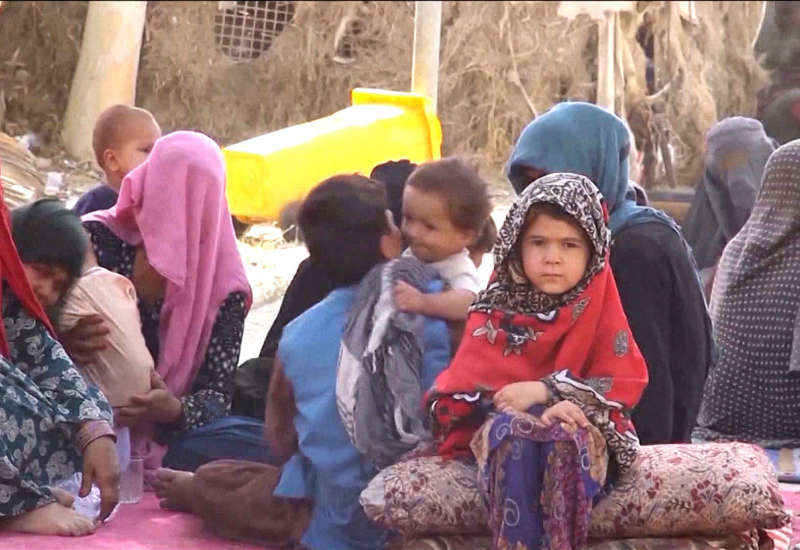President Joe Biden has allocated $500 million in new funds for relocating Afghan refugees following the Taliban takeover in Afghanistan. The U.S. had already vowed to help evacuate over 80,000 Afghan civilians who qualify for special immigrant visas and face possible retribution from the Taliban, such as translators and interpreters for the U.S. military or NATO, but critics say the Biden administration needs to move faster and expand refugee resettlement from the country. There is already a backlog of more than 17,000 Afghan nationals and 53,000 of their family members awaiting visa approval. “This entire backlog and this delay in evacuating people could have been handled very differently,” says Manoj Govindaiah, the director of policy and government affairs at RAICES, which has resettled more than 600 Afghan refugees since 2017, including 116 this year alone — among them, 79 children, and a family of 10 just last night. “Trump announced in February of 2020 that he was going to be withdrawing all troops from Afghanistan,” Govindaiah notes. “At that moment, we’ve known that this day is coming and these people are vulnerable.”
TRANSCRIPT
This is a rush transcript. Copy may not be in its final form.
In response to the Taliban’s takeover of Afghanistan, President Biden has allocated half a billion dollars in new funds for relocating Afghan refugees, including those who applied for special immigrant visas, known as SIVs. The U.S. had already vowed to help evacuate over 80,000 Afghan civilians who qualify for these visas and risk retribution from the Taliban, such as translators and interpreters for the U.S. military or NATO. There’s already a backlog of more than 17,000 Afghan nationals, 53,000 of their family members, awaiting visa approval.
For more, we go to Manoj Govindaiah. He is the director of policy and government affairs at the Refugee and Immigrant Center for Education and Legal Services, known as RAICES, which has resettled more than 600 Afghan refugees since 2017, including 116 this year — among them, 79 kids, and a family of 10 just last night.
Welcome to Democracy Now!, Manoj. Start off by saying what is happening. You’re talking about hundreds. The number of people who are trying to get out of Afghanistan right now are in the thousands, perhaps the tens of thousands.
MANOJ GOVINDAIAH: Thank you so much for having me, Amy.
Yeah, I mean, we are talking about thousands of people who are trying to flee Afghanistan. About 18,000 to 20,000 have applied for something called special immigrant visas, SIVs, which are available to Afghan citizens who provided valuable and faithful service to the United States government or contractors to support their efforts during the U.S.-led war. The average processing time for this visa is over 800 days. So it takes several years, this process, and it involves all sorts of security checks and background checks and letters of support from U.S. military commanders that confirm an individual’s assistance — you know, all sorts of documents that need to be provided in order for someone to apply for this visa and make their way to the United States with permanent residency and eventually be able to bring their family over.
Now, of course, if there’s 18,000 people who are in the pipeline, we have known for many years — at least 800 days — that there is this number of people who are trying to make their way here, who appear eligible for permanent residency in the U.S. And yet, our government, the administration, has taken very few efforts, to date, to actually support this population, knowing that we are withdrawing from Afghanistan and that this particular group of people, who have provided support to the United States, are at serious risk of harm once a different government — in this situation now, the Taliban — take over in the country.
The Biden administration has evacuated, I think, around a couple thousand folks, nearly 2,000, to Fort Lee in Virginia and has announced that they will be working on evacuating additional SIV applicants to other military bases — which is a start, for sure. But, you know, I think the entire process could have been — this entire backlog and this delay in evacuating people could have been handled very differently, because we’ve known — you know, I think Trump announced in February of 2020 that he was going to be withdrawing all troops from Afghanistan. So, at that moment, we’ve known that this day is coming and these people are vulnerable.
AMY GOODMAN: Are they preparing Fort Bliss, a place you know well because of all of the migrants who have been put there, Fort Bliss in Texas and Fort McCoy, as well? Are they preparing these two places for tens of thousands of Afghans?
MANOJ GOVINDAIAH: Yeah, so, it is our understanding that Fort Bliss, near El Paso, and Fort McCoy, in Wisconsin, are likely to be used to house SIV applicants while they continue with the immigration process in the U.S., after they’ve been evacuated. But, you know, we only know that from the media reports. We don’t have any other information or knowledge to suggest that it’s accurate.


